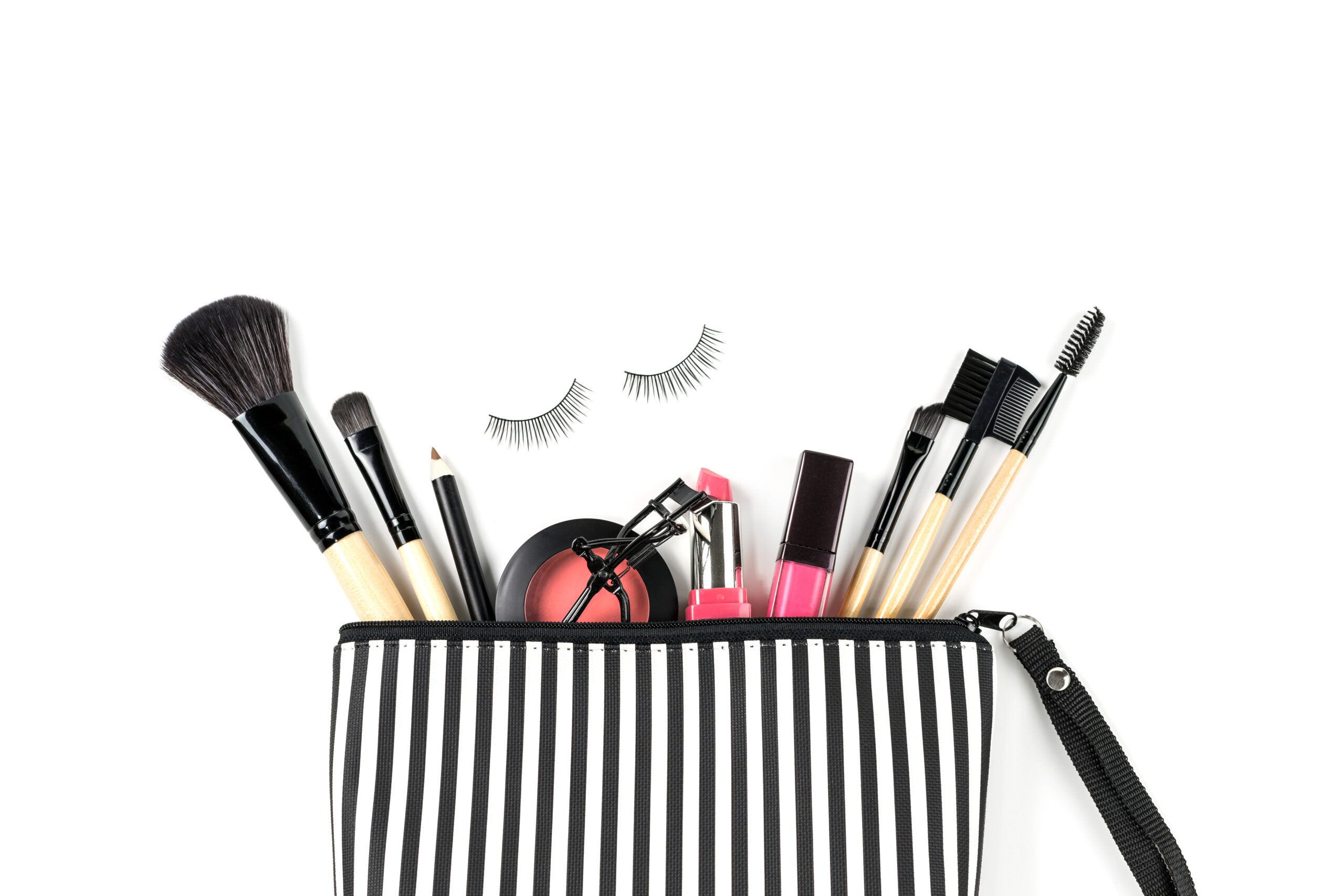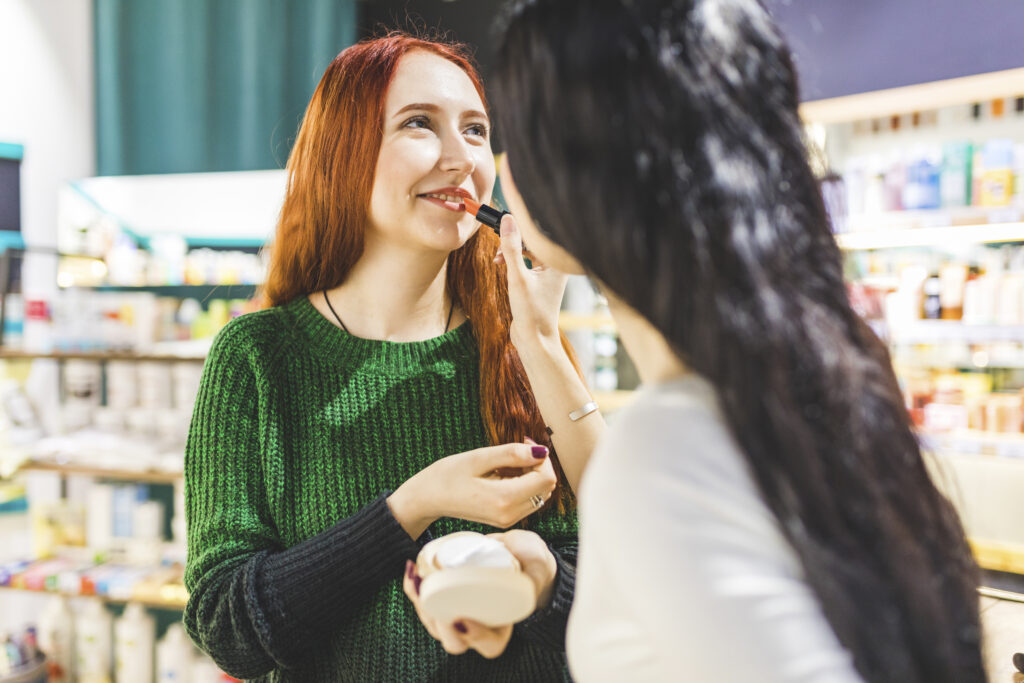
Makeup bags are breeding grounds for bacteria, viruses, and fungi. Learn about ways we might be contaminating our pricy skincare and makeup products, and how we can take better care of them.
How makeup and skincare products get contaminated
Most of us don’t think of washing our hands before taking out our makeup bag to refresh our lipstick or mascara. Every time we open the makeup bag, we can introduce germs. This is especially true in the bathroom setting. Many beauty products have E. coli contamination in them, indicating fecal contamination. When we open a jar and put our fingers inside to take out the product, we introduce whatever germs were on our fingers into the jar.
Makeup applicators such as brushes and beauty blenders continuously pick up oil, dirt, grime, dead skin cells, and pathogens from our skin. When the applicator is put in the product again, the pathogens picked up by the applicator find a new breeding ground. Based on some studies, 93% of beauty blenders are never cleaned, and 64% have been used without cleaning even after they dropped on the floor. Other products such as lipsticks, lip glosses, and mascaras directly pick up microbes from our lips and eyes.
Breeding ground for bacteria, viruses and fungi
Scientists Amreen Bashir and Peter Lambert of Aston University’s School of Life and Health Sciences in the UK investigated which pathogens were present in people’s makeup items. They used donated beauty products from five categories- lipstick, lip gloss, eyeliners, mascaras, and beauty blenders. Using the donated samples, they conducted microbiological studies where they cultured all microorganisms in there and then identified them.
They found that 70-90% of all products contained bacteria in significant quantities. Bacterial loads were especially high in beauty blenders.
About 27% of all product types and 57% of beauty blenders specifically contained Enterobacteriaceae and fungi. They also found harmful bacteria including Staphylococcus aureus, Escherichia coli, and Citrobacter freundii.
Risks of using contaminated makeup
Bacteria, viruses, and fungi can grow exponentially inside the products or applicators and can enter the skin through openings on the skin such as small open cuts or pimples. Entering through broken skin or landing on the nose and eyes can potentially cause reinfections. The pathogens can also irritate the skin and result in breakouts of acne or pimples.
Sometimes, the aftereffects of using contaminated products are much more serious.
In Australia, Jo Gilchrist, 27, was left completely paralyzed after sharing a makeup brush from a friend who had a Staphylococcus aureus infection on her face. She believes the infection got into her body through a cut or a pimple on her face. Her immune system could not fight off the bacteria, and the strain of the bacteria- Methicillin-resistant Staphylococcus aureus (MRSA)- was a particularly dangerous strain that is resistant to a lot of common antibiotics treatments. MRSA infection usually appears as bumps or boils on the skin. Jo’s infection spread to her spine and infected it resulting in paralysis and loss of bowel or bladder control.
In another case, a woman in California might have gotten infected with herpes by trying a lipstick sample at Sephora, a beauty store where customers can try on makeup products before buying them. Herpes is caused by the herpes simplex virus. Oral herpes can spread by coming in contact with secretion from herpes sores and boils. Even if there are no visible boils or skin lesions, the virus can be present on the surface of the skin capable of infecting others. The infection is incurable and causes intermittent flares or cold sores.

Should you try makeup in the stores?
While there are obvious advantages of trying costly makeup products before buying them, there can be risks of catching infections as the products may be contaminated. How do store samples get contaminated? To visualize that, imagine that the person who tried the product before you had an infection such as oral herpes. How did they interact with the product? Did they use it directly on their lips or skin? Did they use a disposable applicator to apply the product? After applying makeup on their skin or lips, the applicator now had the herpes virus on it. Did they re-dip the applicator in the product to get some more? If that happened, the rest of the product is now contaminated.
Since it can be easy for store samples to get contaminated, it may be best to understand their sample application or distribution process before trying on any products.
When to toss out your product
If the makeup products have reached their expiration date, look cloudy, have clumps, have changed consistency, or do not smell right, it is time to toss them out. If the foundations, lipsticks, or other cosmetics have changed color or feel sticky to the touch, it is time for them to go.
Expired products may do more harm than good, so it is best to be vigilant. Also, note that the product may not last till the expiration date once it has been opened. For example, most mascaras should be discarded 2-4 months after opening irrespective of their date of expiration.
Typical shelf life of beauty products after opening
The following are the general and expected shelf lives of commonly used makeup and skincare products.
Cleansers. 2 years unopened and 12 months after opening
Moisturizers. 2 years unopened and 12 months after opening
Mascaras. 2 years unopened and 3 months after opening
Lipsticks. 2-3 unopened and 1-2 years after opening
Lip glosses. 2-3 unopened and 12-18 months after opening
Liquid foundation. 1-2 years unopened and 6-12 months after opening
Eye shadow. 3 years unopened and 12 months after opening.
Sometimes manufacturers will have a sign somewhere on the container or packaging that has a number followed by the letter M, e.g. 12M. This may be accompanied by a picture of an open jar. This is their information about the shelf life of their product after opening. 12M would mean that the shelf life is 12 months after opening.
However, the shelf life of products can change based on how they are used. For example, some products may deteriorate faster if you leave them out in the hot sun. This is particularly true of sunscreens. On the other hand, some products like skin creams with active ingredients such as vitamin C, retinol, etc. may enjoy a longer shelf life if they are refrigerated. Products with active ingredients can also rapidly deteriorate if they are exposed to light. They will come in dark or light-resistant containers but users must remember to close them shut after every use. Organic products without preservatives may have a much shorter shelf life after opening because they may not have chemicals in them that prevent microbial growth.
Toxic chemicals
To prevent microbial growth and extend shelf life, many manufacturers add toxic chemicals such as parabens, phthalates, and formaldehyde to skincare products and cosmetics. However, such chemicals can be harmful to human health when used long-term. It may be healthier to use clean and organic products that are free of these chemicals, but that can be expensive as the products may be pricier and may not last as long.

Tips to keep makeup and skincare products clean
- Never share makeup or skincare products with anyone.
- Wash hands before using makeup and skincare products. It is especially important if when sick.
- When first opening a makeup or skincare product, write the date of opening on the container with a water-resistant marker. This can help keep track of its shelf life.
- Close makeup bottles and jars tightly after every use.
- Wash makeup sponges or blenders with soap and water after every use.
- If a makeup brush, sponge, or beauty blender falls on the floor, wash it before use.
- Wash makeup brushes every two weeks.
- Avoid storing makeup and skincare products in makeup bags. Instead, store them in a drawer in a cool, dry place. Clean the drawer often.
- Avoid storing makeup in the bathroom. The hot and humid conditions encourage bacterial growth.
- Exercise caution while using your skin products when you are sick to minimize the risk of contaminating them.
The information provided in our blog posts is for informational purposes only and is not intended as a substitute for professional medical advice, diagnosis, or treatment. Always seek the advice of your physician or other qualified health provider with any questions you may have regarding a medical condition. Never disregard professional medical advice or delay in seeking it because of something you have read on this blog.






